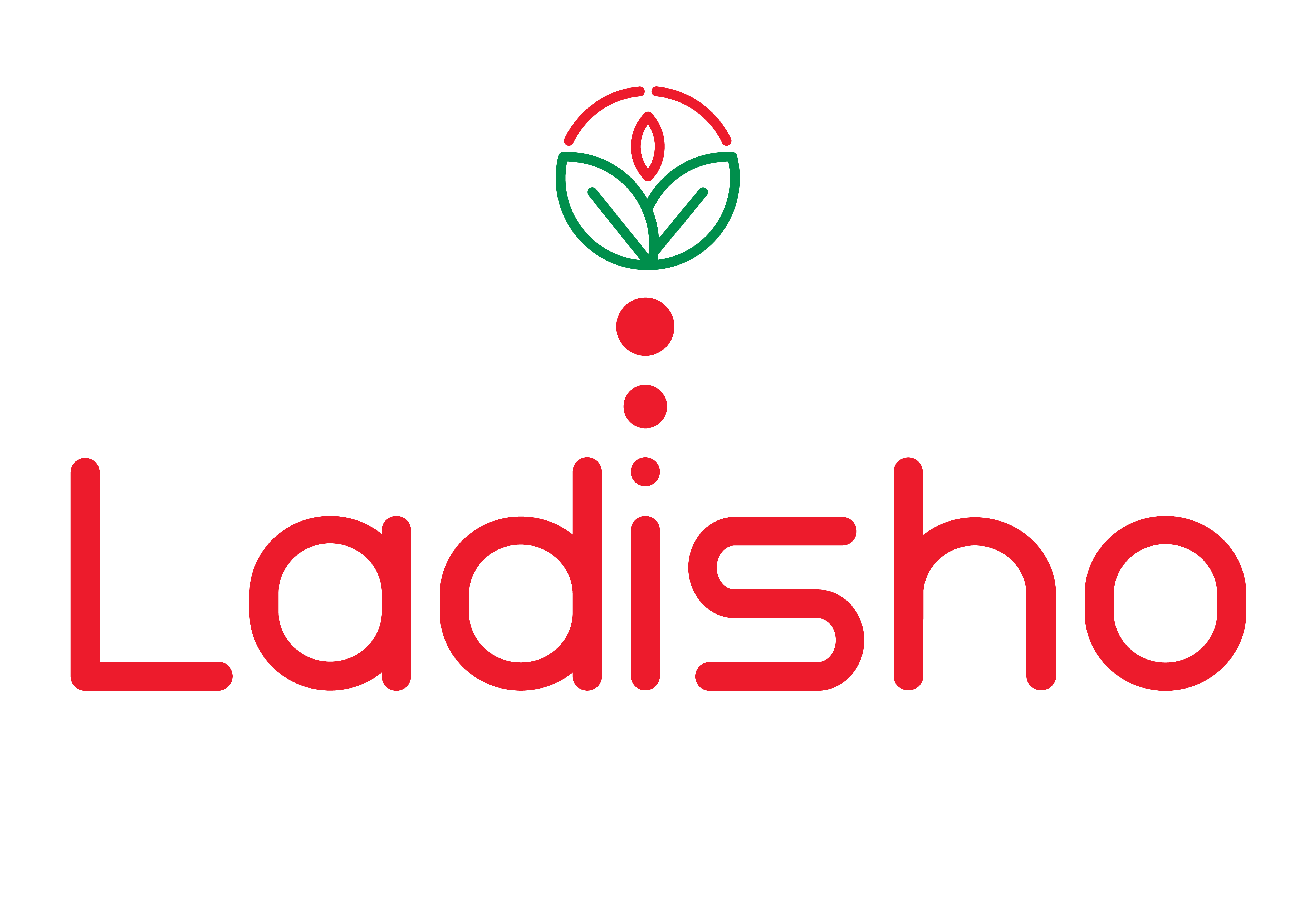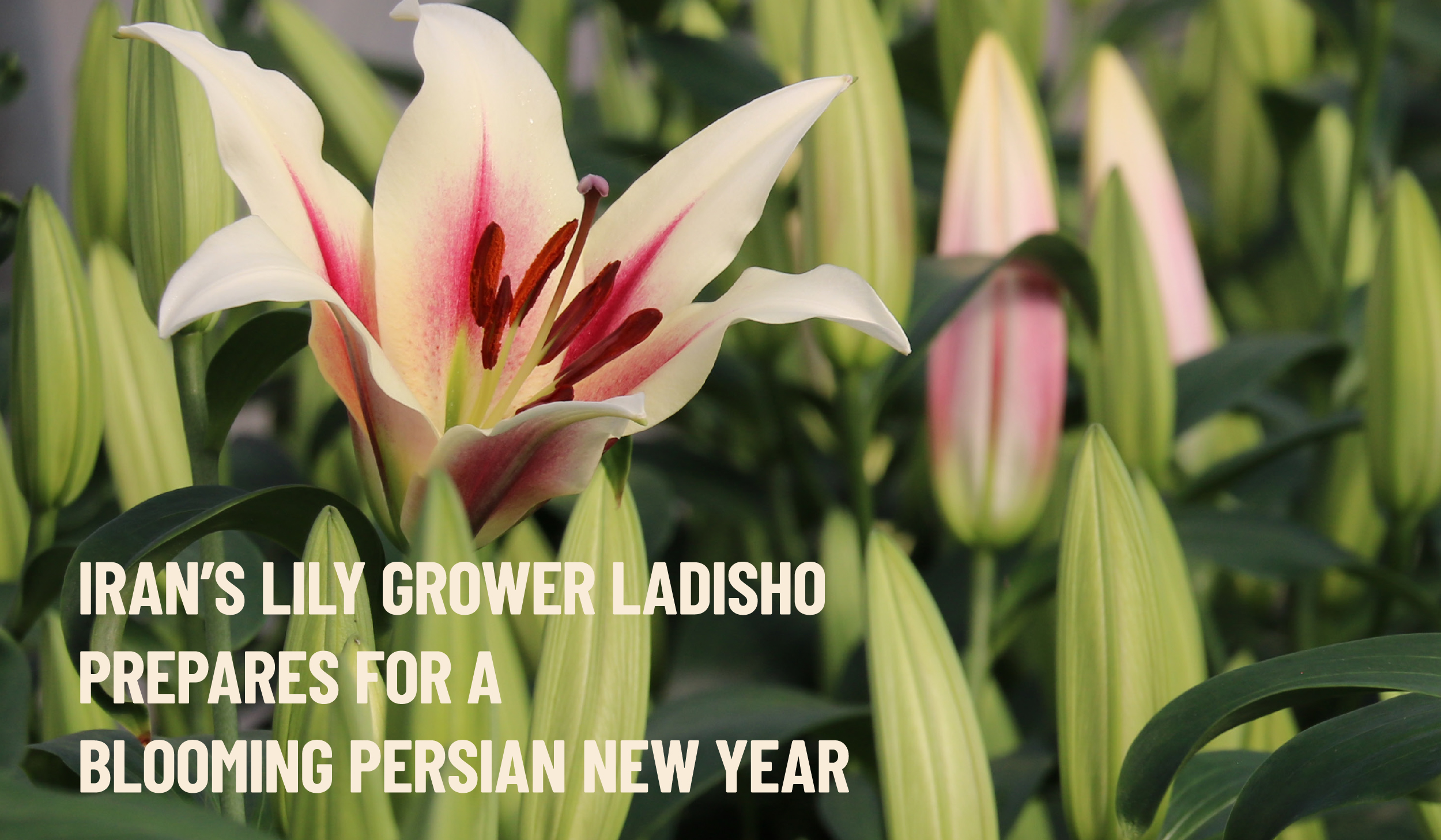
Ladisho grows, markets, packs and ships a diverse and consistent selection of lilies year-roundoperating in a country plagued by seemingly endless political mandates and sanctions. Yet, thegrower shows a remarkable level of resilience that is dificult, if not impossible, to find elsewherein ornamental horticulture. Amid a challenging business environment, it is now growing more than 500,000 lilies to usher in the Persian New Year, also known as Nowruz, on 20 March
The weeks before Nowruz often feel like the calm before the storm, says Majid Jahangiri, who, together with his brothers Reza and Hamid, began the four-hectare Ladisho cut lily nursery in Dehaghan-80km south of Iran’s second-largest city and consumer market, Isfahan, often referred to as ‘the jewel of Ancient Persia.
He notes, “Nowruz marks one of our busiest seasons.
During the roughly two-week festival, we witness a surge in demand typically selling three to five times more lilies than usual.
Proper crop scheduling and efficient storage strategies help us effectively prepare for the Nowruz peak sales season which begins around 10 March and lasts until 25 March.”
Now Ruz is arguably one of Iran’s most important floral holidays.
Jahangiri says, “Nowruz holds a special place in Iranian culture.
The beginning of the year aligns with nature’s renewal, and flowers play a significant role in celebrations as symbols of beauty and life.
Among cut flowers, lilies rank fourth or fifth in popularity, following hyacinths and tulips, which hold the top spots.”
بهار و گُل طربانگیز گَشت و توبهشکن
به شادی رخِ گل بیخ غم ز دل بر کن
“Spring and all its flowers
.Now joyously break their vow of silence
;It is time for celebration, not for lying low
You too-weed out those roots of sadness from your heart.”
A poem by Hafez, Iran’s widely celebrated poet often referred to as the father of Persian poetry
wrote this quatrain to pay tribute to spring and herald the beginning of the Persian New Year, aka Nowruz
بهار و گُل طربانگیز گَشت و توبهشکن
به شادی رخِ گل بیخ غم ز دل بر کن
“Spring and all its flowers
.Now joyously break their vow of silence
;It is time for celebration, not for lying low
You too-weed out those roots of sadness from your heart.”
A poem by Hafez, Iran’s widely celebrated poet often referred to as the father of Persian poetry
wrote this quatrain to pay tribute to spring and herald the beginning of the Persian New Year, aka Nowruz
The weeks before Nowruz often feel like the calm before the storm, says Majid Jahangiri, who, together with his brothers Reza and Hamid, began the four-hectare Ladisho cut lily nursery in Dehaghan-80km south of Iran’s second-largest city and consumer market, Isfahan, often referred to as ‘the jewel of Ancient Persia.
He notes, “Nowruz marks one of our busiest seasons.
During the roughly two-week festival, we witness a surge in demand typically selling three to five times more lilies than usual.
Proper crop scheduling and efficient storage strategies help us effectively prepare for the Nowruz peak sales season which begins around 10 March and lasts until 25 March.”
Now Ruz is arguably one of Iran’s most important floral holidays.
Jahangiri says, “Nowruz holds a special place in Iranian culture.
The beginning of the year aligns with nature’s renewal, and flowers play a significant role in celebrations as symbols of beauty and life.
Among cut flowers, lilies rank fourth or fifth in popularity, following hyacinths and tulips, which hold the top spots.”
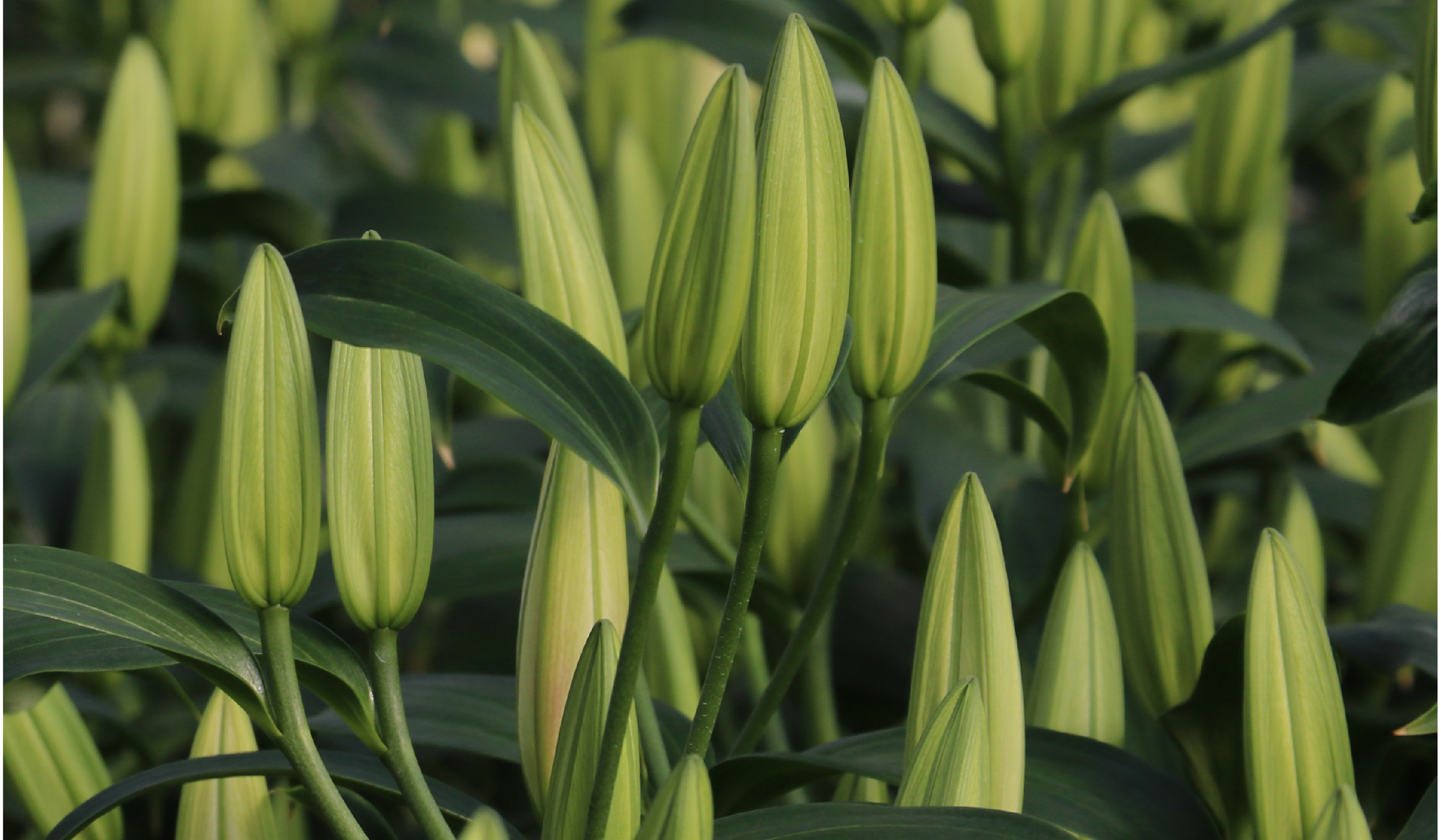
A REMARKABLE YEAR
It has been a remarkable year or the Iranian grower, with an inaugural in-house trade event showcasing Orienpet lilies (OT) and double-flowered lilies, plus a three-month shortage of lilies seeing a significant uptick in business.
Jahangiri recalls, “Key factors that have most contributed to our company’s success are production and product quality, consistency, bespoke customer service, customer
loyalty, and the dedication of our talented workforce,”
Whoever works in the company must have different responsibilities.
“I believe a successful business must be built on the expertise of specialists from diverse fields. For instance, my eldest brother specializes in finance, my second brother, Hamid, focuses on the daily greenhouse operations, and I, as the youngest, am dedicated to
sales and marketing.”
Together, the three brothers manage a workforce that fluctuates between 45 and 50 employees depending on the season.
Majid Jahangiri comments, “Greenhouse workers, junior staff, middle manager and managers, each play a vital role in sustaining our operations and upholding our standards. Like in many other countries, Iran faces significant labor supply challenges.
To solve shortages, we have put much energy into strengthening our brand’s reputation to retain our current workforce while attracting and training new talented people.
Additionally, we strive to be a top choice for job seekers by offering comprehensive welfare benefits and creating a supportive and desirable work environment.”
TRIAL AND ERROR
Success did not bloom overnight when Jahangiri first thought about starting a greenhouse business 20 years ago. Little did he and his siblings know about the specificity of ornamental horticulture. He comments, “Initially, we ventured into rose cultivation, establishing greenhouses through trial and error.
After experimenting with various crops, we realized the importance of specializing and building a brand around a single flower.
About 12 years ago, we shifted focus and dedicated ourselves exclusively to cultivating lilies.”
Specialization matters, Jahangiri acknowledges, as it helps maintain exceptional quality, gain greater efficiency, and create a more substantial market presence.
EXPLORING THE COMPETITIVE LANDSCAPE
Along the way, the Jahangiri explored the competitive landscape and learned who their competition is.
Majid says, “We rely on solid data, particularly customs statistics on lily bulb imports, which are accessible through the Iran Customs Administration website.
Annually, around four million lily bulbs are imported into Iran, with approximately two million of these handled by our company.
The remaining bulbs are cultivated by medium- and small-scale growers predominantly in the central provinces of Tehran and Alborz, covering approximately 4.5 hectares of production area.”
Majid Jahangiri was born in 1980 in Dehaghan, a city in the mountainous region where significant climate variability exists.
“The region experiences extreme temperatures, with winter lows reaching -12°C and summer highs of 37°C. To manage these conditions, we use fan-and-pad systems for cooling and hot air furnaces and water radiators for heating during winter.
While energy prices in Iran remain reasonable compared to other countries, we are committed to adopting alternative energy sources like solar power.”
Dehaghan’s climate is conducive for growing cut flowers, particularly lilies.
Taking a cautious view of statistics, Jahangiri believes Iran’s greenhouse area, which is dedicated to year-round lily production, currently stands at 10ha.
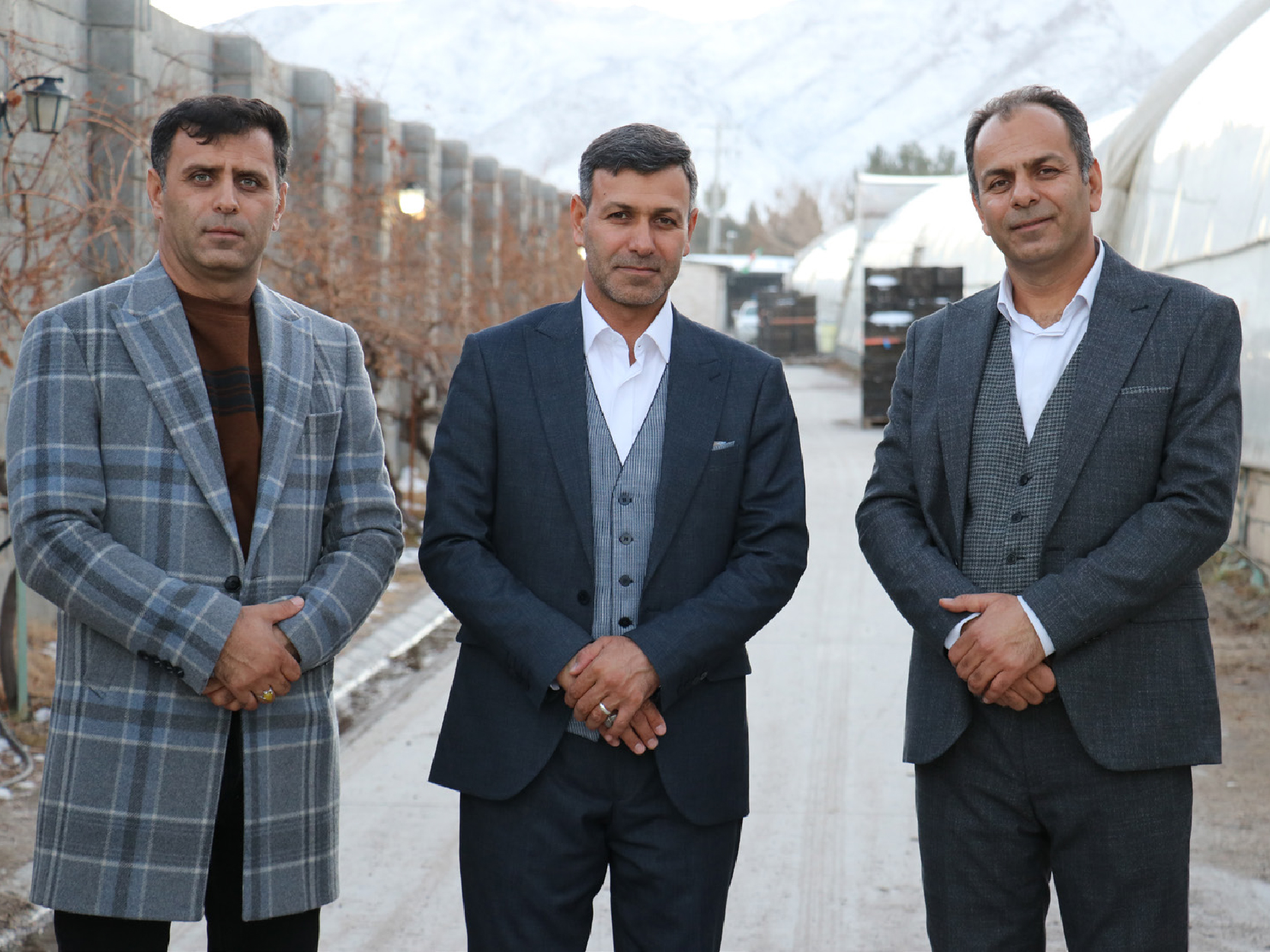

EXPLORING THE COMPETITIVE LANDSCAPE
Along the way, the Jahangiri explored the competitive landscape and learned who their competition is.
Majid says, “We rely on solid data, particularly customs statistics on lily bulb imports, which are accessible through the Iran Customs Administration website.
Annually, around four million lily bulbs are imported into Iran, with approximately two million of these handled by our company.
The remaining bulbs are cultivated by medium- and small-scale growers predominantly in the central provinces of Tehran and Alborz, covering approximately 4.5 hectares of production area.”
Majid Jahangiri was born in 1980 in Dehaghan, a city in the mountainous region where significant climate variability exists.
“The region experiences extreme temperatures, with winter lows reaching -12°C and summer highs of 37°C. To manage these conditions, we use fan-and-pad systems for cooling and hot air furnaces and water radiators for heating during winter.
While energy prices in Iran remain reasonable compared to other countries, we are committed to adopting alternative energy sources like solar power.”
Dehaghan’s climate is conducive for growing cut flowers, particularly lilies.
Taking a cautious view of statistics, Jahangiri believes Iran’s greenhouse area, which is dedicated to year-round lily production, currently stands at 10ha.
YEAR-ROUND SUPPLY
Nestled at an altitude of over 2,000 meters above sea level, Ladisho primarily provides a year-round supply of lilies to florists.
“In the old days, our customer base comprised predominantly floral wholesalers but with the advent of direct distribution networks, florists now form the majority of our clientele.”
Ladisho’s annual output lies between 1.5 to 2 million lily stems. This production scale reflects the company’s commitment to meeting market demand while maintaining quality.
LAs, OT hybrids, LO hybrids, Orientals, Asiatics, and Longiflorums variety is the spice of life in commercial lily production.
Breeding work resulted in many new cultivars in the traditional hybrid division and the newer interdivisional category.
Asked about his reactions to today’s available assortment of lilies, Jahangiri comments, “Our focus is on OT hybrids, followed by double-flowered lilies, primarily Oriental varieties. OT hybrids form the bulk of our production due to their compatibility with Iran’s climatic conditions, making them an ideal choice for our greenhouses. In white, ‘Saronno’, ‘Tisento’, and ‘Sempione’ are in high demand while popular varieties in pink include ‘Tabledance’, ‘Dalian’, and ‘Profundo’. ‘Lasting Love’ and ‘Touchstone’, and ‘Catina, Eldoret and Yelloween are the favourites in red and yellow respectively.
Iran is widely known as a nation flower lovers with an outspoken love for two-toned varieties such as ‘Frontera’, ‘Nymph’, and ‘Candle Club’. Jahangiri notes, “As with the rest of the world, customer preferences evolve rapidly. Adapting to these changes is one of the significant challenges for producers. In recent years, we have witnessed significant shifts in customer tastes. Lighter shades, particularly pure white, are the most sought-after, followed by soft pinks and gentle pink hues. Yellow, red, and bicolor varieties also enjoy notable demand in Iran.”
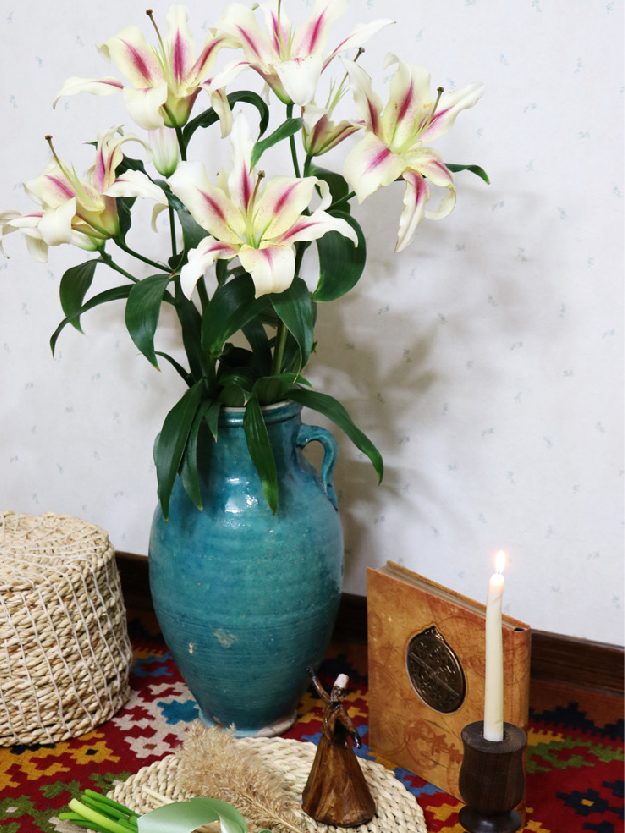
ACCESS TO NEW VARIETIES
He feels his company has good access to new varieties from lily breeding, including double flowered lilies. “Yes, absolutely, communication advancements have accelerated the spread of information. People are increasingly eager to explore new experiences, and we must adapt to meet their evolving tastes and demands. Our focus on producing double-flowered lilies is a prime example of this alignment with contemporary preferences.”
Rating Iranian interest in double flowered and pollen free lilies Jahangiri says, “Double flowering lilies offer unique features, including pollen-free, subtle fragrance, and exceptional beauty.
However, in Iran, where floral arrangements often utilize floral foam, double lilies face water absorption issues, leading to faster wilting. To address this, we recommend customers use these lilies as cut stems placed in waterfilled vases for optimal freshness
and longevity.”
It is safe to say that the Netherlands is world-beating in lily breeding, but does Jahangiri know of any lily breeding work done within Iran’s research stations and universities? He says, “Current studies are focused on improving Iran’s indigenous lily species, particularly the Lilium ledebourii, commonly referred to in Persian as Sosan Chelcheragh.”
This rare lily thrives in a few scattered localities in Iran and Azerbaijan. Above its sturdy stems rise as much as 10-15 stunning flowers, which look white.
Closer examination reveals a subtle fragrance and petals, each with a greenish yellow center, with just a few spickles of red-purple scattered around, with the slightest trace of pale pink inside the inner petals.
Its anthers are in fire-engine red.
MANDATES AND SANCTION
Iran has a highly abundant flora, yet its path to ornamental horticulture is not spread by
petals alone. Political mandates and sanctions are the perennial challenges for Iran as a country.
“Jahangiri says, “Sanctions have undoubtedly impacted small and medium-sized businesses, including cut flower nurseries.
One of the most significant consequences has been the emergence of intermediaries and
brokers, which drive production costs and add challenges to the supply chain.
Unfortunately, sanctions limit our ability to increase bulb pre-orders for new
markets.”
FUTURE-THINKING MINDSET
At the same time, Ladisho gives proof of a future-thinking mindset, not closing its eyes,
for example, to the need for global sustainable development.
Jahangiri says, “We’ve undertaken research to support environmental sustainability and reduce production costs.
Our primary growing substrates are a combination of cocopeat and perlite, providing an effective balance for cultivation.
Considering our natural and climatic conditions, we are exploring using sustainable energy sources.
With abundant sunlight throughout the year, we aim to transition from conventional energy to solar power in the near future.”
The company takes a keen interest in methods and techniques used in horticulture that can promote environmental stewardship, economic profitability and social responsibility. Jahangiri explains, “We strive to lead by example in adopting sustainable practices.
For instance, we sterilize our growing substrates using steam, significantly reducing chemical usage.
Although lilies are relatively pest-resistant, biological controls such as Amblyseius swirskii help manage pests effectively, minimizing environmental impact.”
If Dehaghan derives from Dehaq, meaning ‘water place’, the pertinent question is whether there is enough water to grow lilies.
Jahangiri says, “Water is even more critical than energy, especially given Iran’s significant water scarcity. Choosing greenhouse crops like lilies, which require relatively low water, helps conserve this vital resource. At Ladisho, we use water filtration systems and drainage from planting beds to irrigate orchards, maximizing water efficiency.”
A MARKET UNDER PRESSURE
Meanwhile, the market for lilies is under pressure. “Volatility and uncertainty remain.
At the root cause is unplanned production, which frequently drives prices downward. All this is due to oversupply caused by a lack of coordination between bulb importers and lily forcers.
Demand often exceeds supply during holidays and special occasions. However, at other times, mismanagement of bulb imports and simultaneous production cycles—such as in January—lead to oversupply, negatively affecting prices.”
SALES AND DISTRIBUTION
Regarding pricing, Jahangiri notes that the average price per OT hybrid lily stem is around €1,40 and €0.70 for LA varieties.
What distribution channels are used to deliver Ladisho’s lilies to customers?
Jahangiri elaborates, “Florists place orders through an online platform, which our sales team adjusts based on the varieties available.
These orders are then delivered to various cities, including Tehran, using refrigerated trucks, ensuring flowers reach florists in optimal condition.”
In nearby Isfahan, there are currently two major flower markets, the Sepahan International Flower Market standing out most prominently.
Meanwhile, the Isfahan municipality is developing a large market and will soon become operational.
Between 10 to 15 per cent of Ladisho’s blooms are sold through these markets.
Approximately 70 per cent of its production is sold domestically. In comparison, the remaining 30 per cent is exported, primarily through intermediaries, to countries such as Turkmenistan, Iraq, Armenia, Georgia, Oman, and the UAE.
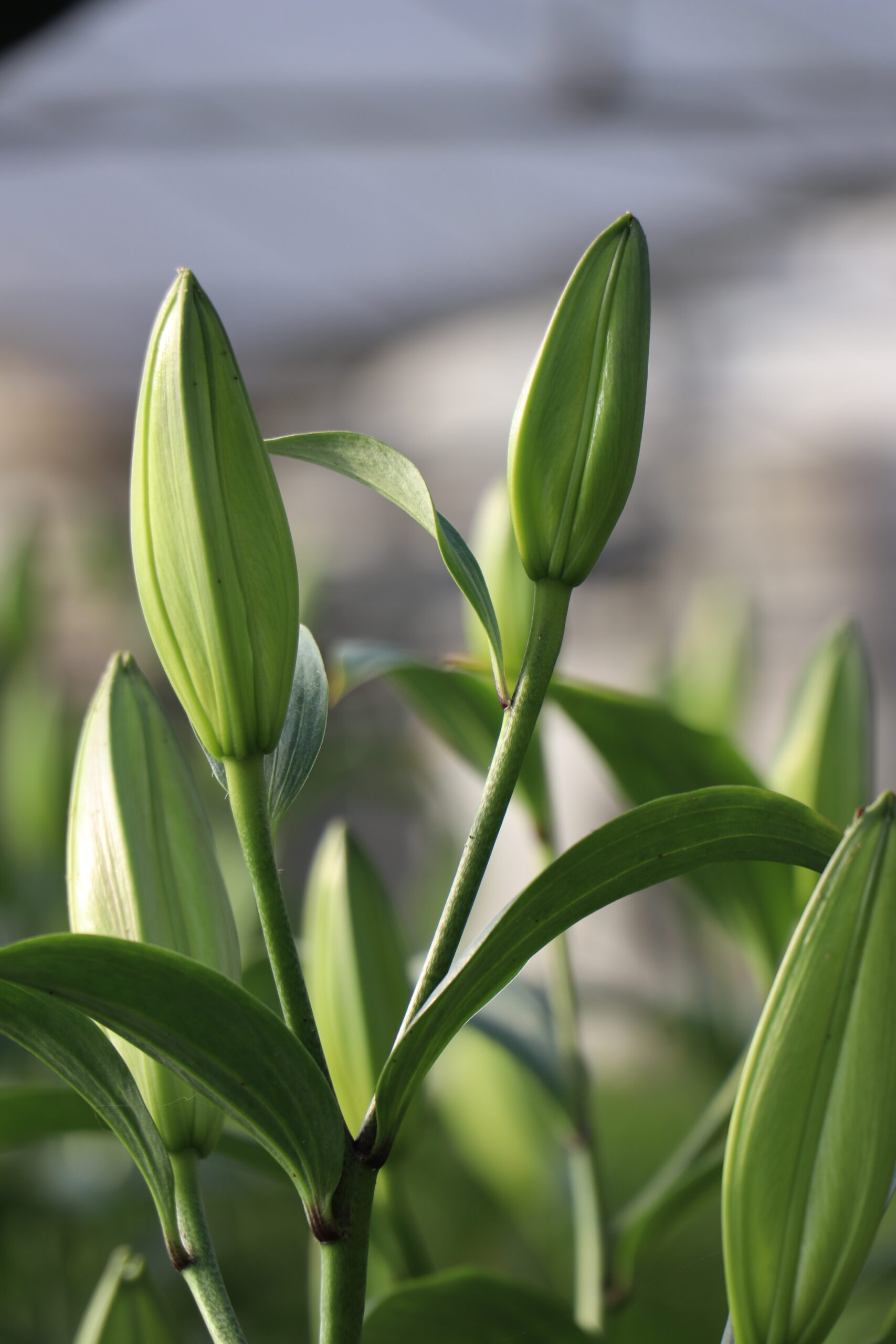
MARKET NEEDS
In identifying the market’s functional needs, desires and goals, Jahangiri asserts that the Iranian flower industry requires significant improvements, including standardized production, packaging, logistics, and last-mile delivery.
“Achieving these goals is part of Ladisho’s 10-year vision to enhance the industry and meet international standards,” he says.
The Iranian government provides some support, such as energy subsidies, issuing permits, and facilitating imports of raw materials.
However, its efforts in marketing and sales for the flower industry remain limited. Therefore, membership of the country’s industry association, the Iranian Society for Ornamental Plants (ISOP) is vital.
Jahangiri says, “ISOP plays a pivotal role in advancing the floriculture industry in Iran. Comprising a distinguished group of experts such as Mr. Pejman Azadi in ornamental
horticulture, ISOP is committed to enhancing research quality and disseminating vital knowledge of ornamental plants and flowers.
The organization facilitates the transfer of expertise and skills, empowering flower growers nationwide.
ISOP membership offers significant advantages, including access to cutting-edge technologies through participation in national congresses and workshops and fostering
international collaborations.
Consequently, ISOP is a crucial platform for its members to remain informed about recent advancements in the field and expand their global networks.”
Looking ahead, what challenges does Jahangir see on the horizon, and how to approach them?
Jahangiri concludes, “I believe very few producers can endure the unstable and challenging conditions that threaten businesses in Iran.
Adaptability has always been a fundamental principle for us Iranian producers.
Given the prevailing international relations and the constant, often unpredictable challenges we face, we are perpetually operating in a state of crisis. As a result, nothing
is ever truly predictable, and resilience becomes our greatest strength.
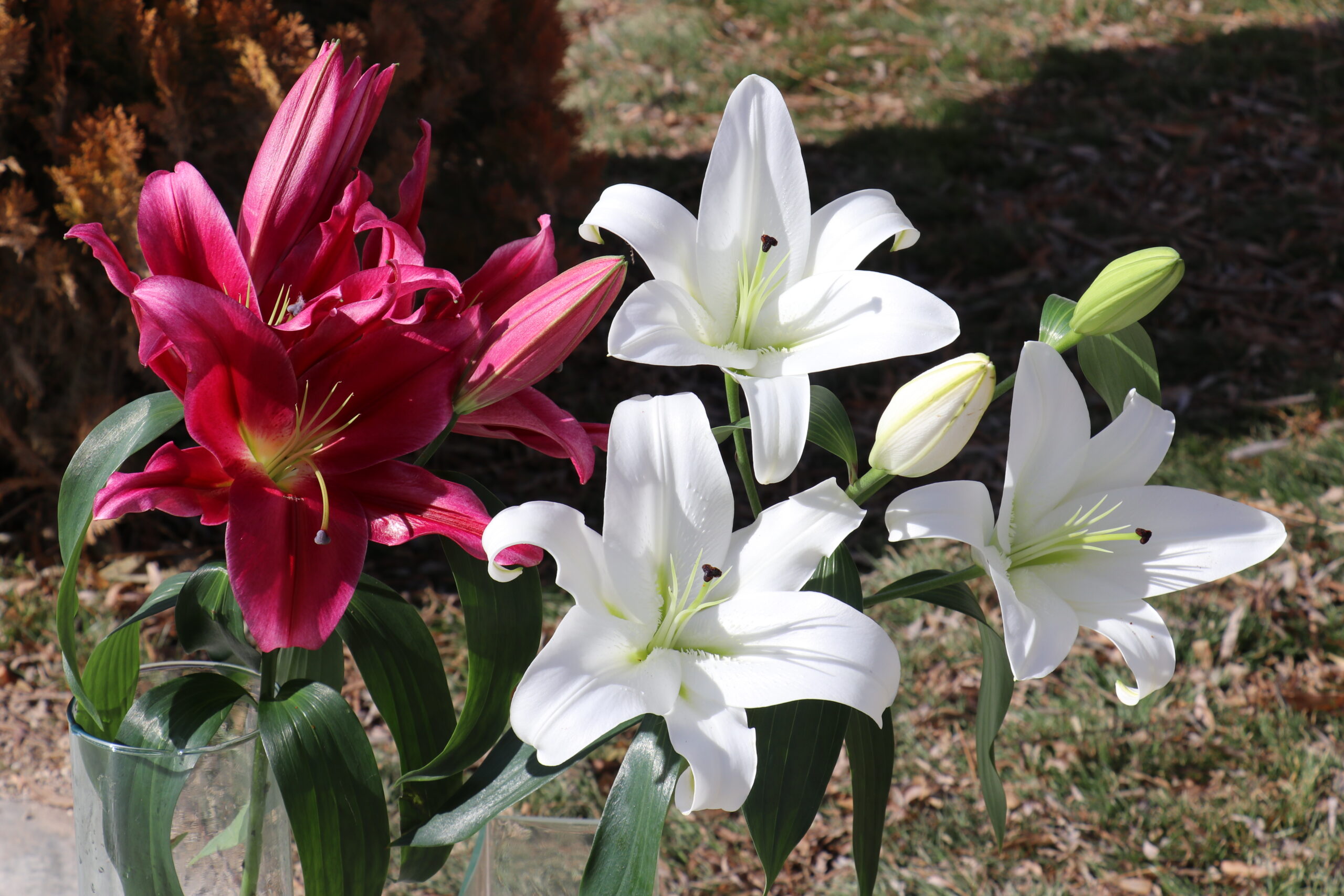
چکیده مطالب
عامل موفقیت
آقای جهانگیری میگوید:« مهمترین عوامل موفقیت ما کیفیت و ثبات تولید، خدمات ویژه به مشتری، وفاداری آنها و تعهد کاری پرسنلمان بوده است.»
نیروی کار و چالشهای آن
مجید جهانگیری میگوید:« مدیران، کارشناسان، کارمندان و کارگران مجموعه نقش حیاتی در موفقیت و پایداری وضعیت ما دارند. ایران هم مثل بسیاری از کشورها با چالش کمبود نیروی کار مواجه است. برای حل آن، بر روی موضوع برند کارفرمایی تمرکز کردهایم تا نیروهای فعلی را حفظ و استعدادهای جدید را جذب کنیم. همچنین با ارائهی مزایای رفاهی و محیط کاری مطلوب، تلاش میکنیم گزینهی اول جویندگان کار باشیم.»
بیست سال تلاش و پشتکار
موفقیت یک شبه به دست نیامده و حاصل بیش از بیست سال تلاش بوده است. ایشان میگوید:« در ابتدا با کاشت گل رز شروع کردیم و با آزمون و خطا گلخانهها را راه انداختیم. بعد از این آزمون و خطا با کاشت محصولات مختلف، متوجه شدیم که باید روی یک گل خاص متمرکز شویم و تقریبا ۱۲ سال پیش بود که تصمیم گرفتیم فقط روی کشت لیلیوم تمرکز کنیم.»
واردات پیاز گل لیلیوم
مجید جهانگیری میگوید:« با توجه به آمار گمرک ایران درباره واردات پیاز لیلیوم، سالانه حدود ۴ میلیون پیاز وارد کشور ایران میشود که نیمی از این مقدار را مستقیما ما وارد می کنیم و بقیه را تولیدکنندگان دیگرکه عمدتا در تهران و البرز هستند عهده دار هستند.»
تنوع محصولات
تولید سالانه لادیشو بین ۱.۵ تا ۲ میلیون شاخه لیلیوم است. آقای جهانگیری میگوید:« تمرکز ما روی هیبرید OT و رزلیلی است.»
نیازهای بازار و آینده صنعت گل ایران
آقای جهانگیری میگوید صنعت گل ایران نیاز به اصلاحات جدی در زمینههای استانداردسازی تولید، بستهبندی، لجستیک و تحویل نهایی
محصول دارد. ایشان باور دارند: «تحقق این اهداف بخشی از چشمانداز ده سالهی لادیشو برای بهبود صنعت و رسیدن به استانداردهای جهانی است.»
صادرات گل
حدود ۷۰ درصد محصولات در داخل کشور فروخته میشود و ۳۰ درصد با واسطه به کشورهای ترکمنستان، عراق، ارمنستان، گرجستان، عمان و امارات صادر میشود.
مقاومت و انعطاف پذیری در بحرانها
در پایان، آقای جهانگیری میگوید:« تنها تعداد کمی از تولیدکنندگان میتوانند شرایط ناپایدار و چالشبرانگیز ایران را تاب بیاورند. ما همیشه با بحران های متفاوتی سروکار داریم و سازگاری رمز بقای ماست. در چنین فضایی، هیچ چیز قابل پیشبینی نیست و تاب آوری، بزرگترین قدرت ماست.»
